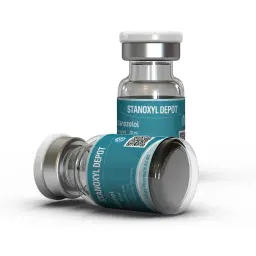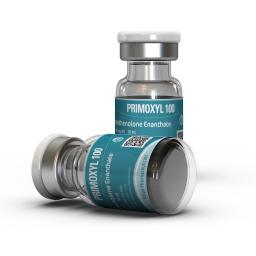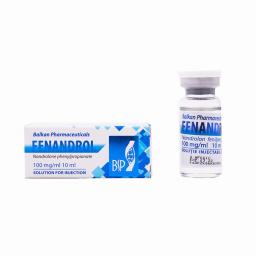Testosterone is the major steroidal hormone produced by the interstitial cells of Leydig in the testes. It is also produced in lesser amounts by the adrenal gland near the kidneys. Over 95% of testosterone is produced in the testes where it is necessary to spermatogenesis. Systemically, androgens (testosterone and dihydrotestosterone, also known as DHT) are involved in sexual differentiation, deveopment of seconday sex characteristics, anabolic metabolism and gene regulation, and male pattern baldness, and behavior.
Biosynthesis
The immediate precursor of gonadal steroids is cholesterol. LH promotes the conversion of cholesterol to pregnenolone. The mechanism by which LH stimulates this conversion is via the formation of the second messenger cAMP via a G-protein linked LH receptor. cAMP then activates protein kinase A, which activates enzymes within the pathway. The subsequent conversion of pregnenolone to testosterone requires the action of 5 enzymes located in the microsomal fraction within the progesterone pathway. Pregnenolone can also be converted to testosterone via the dehydroepiandrosterone pathway. The ability to make testosterone continues from puberty throughout adult life. The secretion rate is about 5 milligrams per day in adult men and it seems to be released as it is produced.
Also produced within the testes are dihydrotestosterone (DHT) and estradiol. Human testes secrete about 50-100 micrograms of DHT per day but most in circulation is derived from peripheral conversion of testosterone, estrogen and androgen precursors from the testes and adrenals. Estradiol may contribute to FSH regulation. High estradiol and a skewed estrogen:testosterone ratio have been implicated in gynecomastia, or abnormal breast enlargement in males.
Transport
Testosterone is carried in plasma bound to a plasma protein called sex hormone binding globulin. Most of circulating testosterone (60%) is bound to this liver-derived protein. The rest (38%) is bound to albumin. Only about 2% of circulating testosterone is free and able to enter cells and exert its metaboloc effects. Most circulating testosterone is metabolized to 17-ketosteroids in the liver and conjugated to glucuronide or sulfate prior to being excreted in the urine.
Metabolic Pathways
There are two pathways for the metabolism of testosterone. The first, ocurring in non-target tissues, is the oxidation of the 17-position to produce 17-ketosteroids that are inactive or less active than testosterone itself. The second pathway involves reduction of the steroid A ring double bond and the 3-ketone. It occurs in target tissues, such as seminal vesicles, prostate, external genitalia and skin, where testosterone is converted to DHT, estradiol and androstanediol. DHT is more potent than testosterone and is the most significant metabolic product of testosterone.
Mechanism
As a steroid, testosterone freely enters target cells and binds to an intracellular receptor. The receptor-hormone complex then binds to DNA promoting gene transcription. In some target cells testosterone is converted within the cytoplasm to DHT which has a greater affinity for the same intracellular receptor. DHT-receptor complexes more readily bind to DNA and influence gene transcription than testosterone-receptor complexes. DHT-receptor complexes are necessary to the formation of male external genitalia in early development, enlargement of the prostate and penis, and hair growth at the time of puberty. The pubertal and post pubertal increase in muscle mass and development of male sex drive (libido) depend primarily on testosterone.
Puberty in the Male
The age at the time of puberty is variable. US boys usually experience puberty between the ages of 9 and 14. Androgens induce the following changes in boys at the time of puberty.
- Penis enlarges in length and width. Scrotum becomes pigmented and wrinkled.
- Seminal vesicles, prostate and Cowper’s glands enlarge and secrete.
- Larynx enlarges, vocal cords increase in length and thickness causing the voice to become deeper.
- Beard appears. Hairline recedes. Pubic hair grows in male pattern (triangle with apex up). Hair appears in arm pits, on chest, and around anus. General body hair increases.
- Behaviorally becomes more aggressive, active. Interest in the opposite sex develops.
- Shoulders broaden and musculoskeletal development occurs (growth spurt).
- Sebaceous gland secretion thickens and increases predisposing to acne.
- Stimulation of erythropoiesis (red blood cell formation).
Steroid Feedback
Testosterone inhibits LH secretion by acting directly on the anterior pituitary and by inhibiting the secretion of hypothalamic GnRH. Externally administered testosterone does not raise the androgen levels in the testes very much and it inhibits LH secretion. Therefore, the net effect of steroid use is generally a decrease in sperm count. Exogenous testoterone had been considered as male birth control but the amount needed to suppress sperm counts causes sodium and water retention.
Best Steroid Products Sales
Order Stanoxyl Depot
|
Primoxyl 100
|
Legal GP Phenyl 100
|


